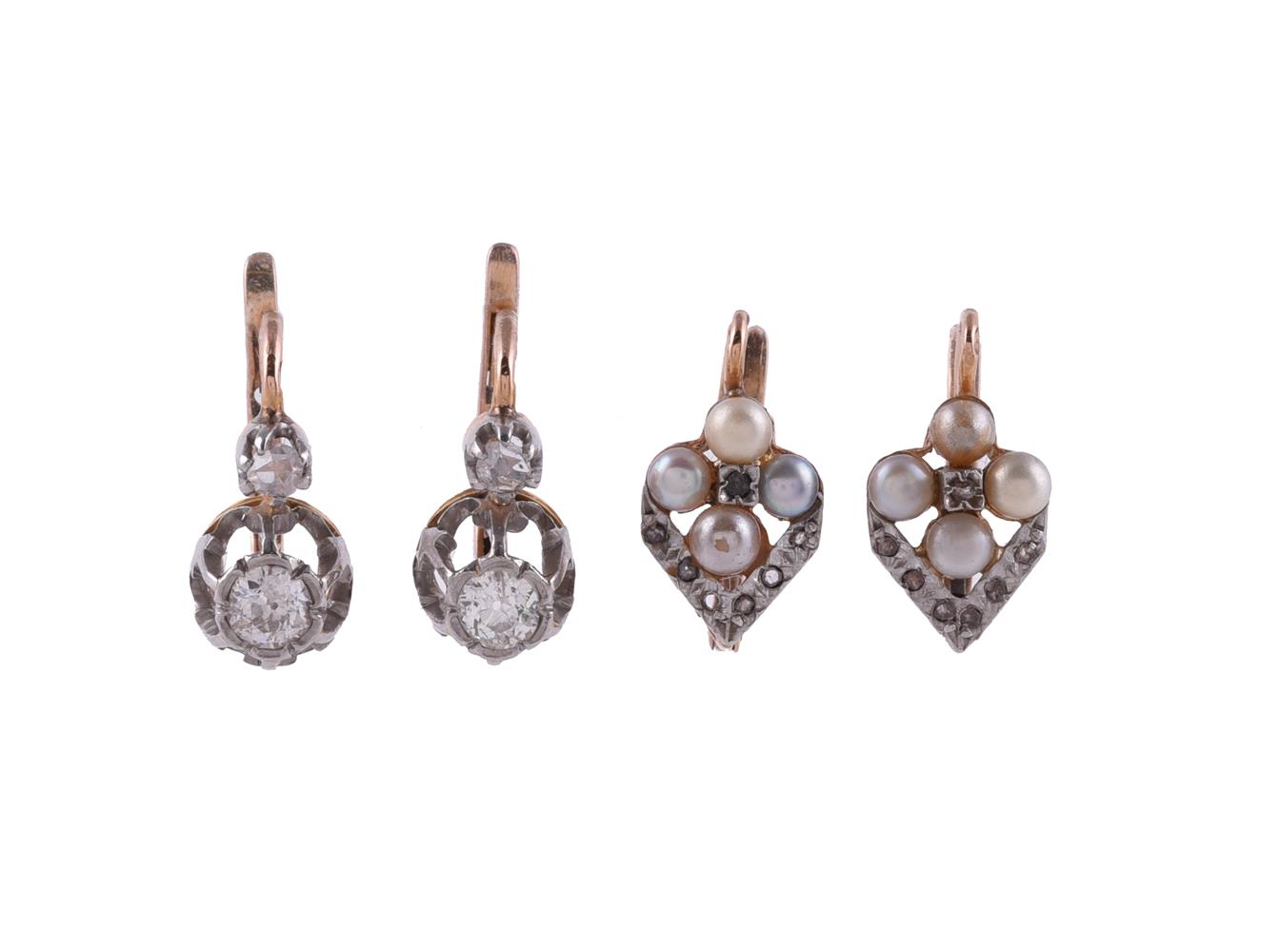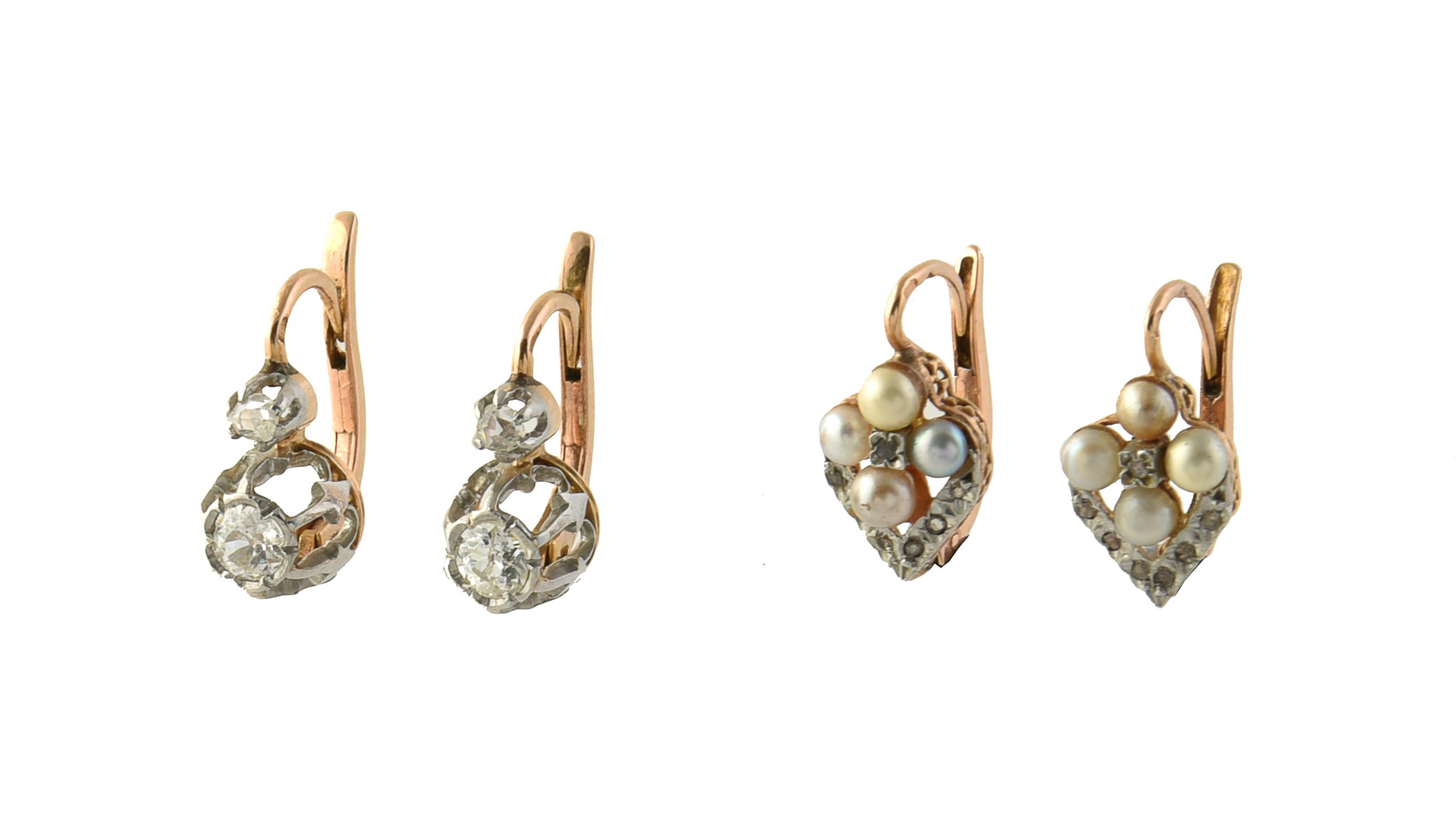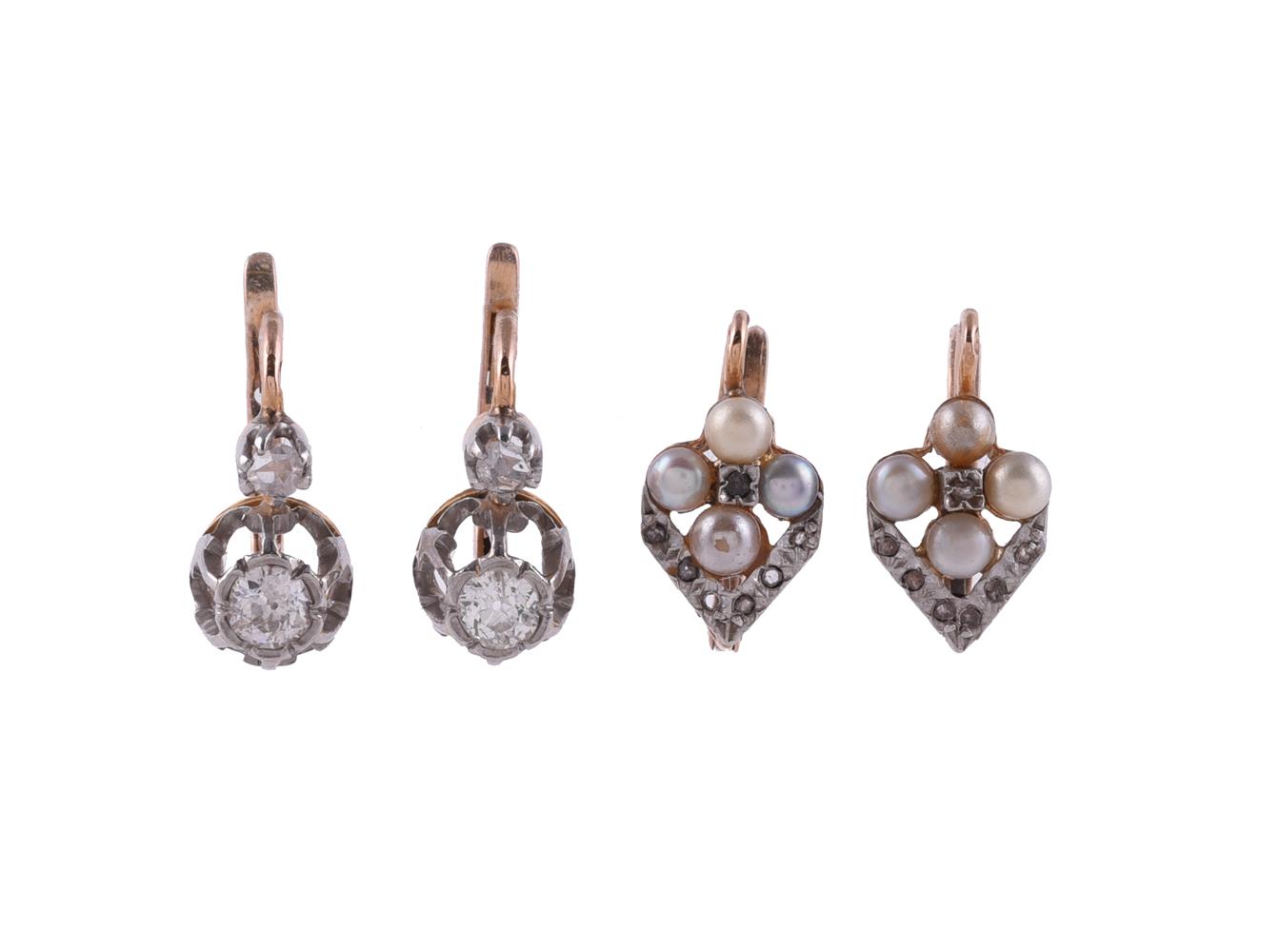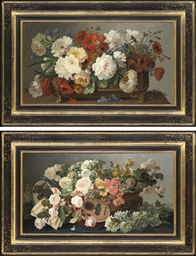A French early 20th century enamel and diamond set pendant by FrÉdÉric de Vernon for Julien Duval, circa 1900, the lobed-shaped pendant inlaid with a tour à réduire plaque of the Virgin Mary, within a blue plique-à-jour enamel border, and edged with rose-cut diamonds and calibre sapphires, the plaque signed to the front ‘F Vernon’, with lozenge maker’s mark with initials ‘JD’ and twig of mistletoe between, for Julien Duval, and French eagle’s head assay mark, suspended from a diamond set bale, length 4.2cm. £1600-2000 Condition Report The detail to the casting is still quite fine, although there is light surface wear all over. The plique-à-jour enamel is in good condition, with no chips or cracks. The sapphires and diamonds are all present and correct, well matched and lively. The mount shows light surface wear. Gross weight is 10gm. Footnote Tour à rèduire was a specialised technique that allowed a large scale detailed model or sculpture to be duplicated with a high level of accuracy, to an object of much smaller scale. The result was the look of hand chasing with an amazing level of detail and relief. Based on a Russian model from the Moscow Mint, circa 1700s, the French developed a series of reducing machines with the final model being put to use at the French mint in 1899. This model, known as the tour à rèduire, intended for engraving coins, was adapted by Lalique for making brooches and other jewellery and objects, and became popular with other Art Nouveau medallist jewellers of the late 19th century, including Frédéric-Charles Victor de Vernon (1858-1911). Frederic de Vernon, medallist and sculptor, won the Grand Prix de Rome in 1887. In the 1890s he began making designs for his friend and contemporary from the École des Arts Décoratifs, Julien Duval, (b. 1856) who had set up as a jeweller specialising in the issuing of editions of arts’ and sculptors’ medals in 1885. Duval approached Vernon to supply medallic designs for his firm in the 1890s and their first was issued in 1896. Pendant medallions with the head of the Virgin were given as first communion presents in the nineteenth century. See: The Art of the Jeweller: A catalogue of the Hull Grundy Gift to the British Museum, Edited by Hugh Tait, Entry No 1152.
A French early 20th century enamel and diamond set pendant by FrÉdÉric de Vernon for Julien Duval, circa 1900, the lobed-shaped pendant inlaid with a tour à réduire plaque of the Virgin Mary, within a blue plique-à-jour enamel border, and edged with rose-cut diamonds and calibre sapphires, the plaque signed to the front ‘F Vernon’, with lozenge maker’s mark with initials ‘JD’ and twig of mistletoe between, for Julien Duval, and French eagle’s head assay mark, suspended from a diamond set bale, length 4.2cm. £1600-2000 Condition Report The detail to the casting is still quite fine, although there is light surface wear all over. The plique-à-jour enamel is in good condition, with no chips or cracks. The sapphires and diamonds are all present and correct, well matched and lively. The mount shows light surface wear. Gross weight is 10gm. Footnote Tour à rèduire was a specialised technique that allowed a large scale detailed model or sculpture to be duplicated with a high level of accuracy, to an object of much smaller scale. The result was the look of hand chasing with an amazing level of detail and relief. Based on a Russian model from the Moscow Mint, circa 1700s, the French developed a series of reducing machines with the final model being put to use at the French mint in 1899. This model, known as the tour à rèduire, intended for engraving coins, was adapted by Lalique for making brooches and other jewellery and objects, and became popular with other Art Nouveau medallist jewellers of the late 19th century, including Frédéric-Charles Victor de Vernon (1858-1911). Frederic de Vernon, medallist and sculptor, won the Grand Prix de Rome in 1887. In the 1890s he began making designs for his friend and contemporary from the École des Arts Décoratifs, Julien Duval, (b. 1856) who had set up as a jeweller specialising in the issuing of editions of arts’ and sculptors’ medals in 1885. Duval approached Vernon to supply medallic designs for his firm in the 1890s and their first was issued in 1896. Pendant medallions with the head of the Virgin were given as first communion presents in the nineteenth century. See: The Art of the Jeweller: A catalogue of the Hull Grundy Gift to the British Museum, Edited by Hugh Tait, Entry No 1152.















Testen Sie LotSearch und seine Premium-Features 7 Tage - ohne Kosten!
Lassen Sie sich automatisch über neue Objekte in kommenden Auktionen benachrichtigen.
Suchauftrag anlegen